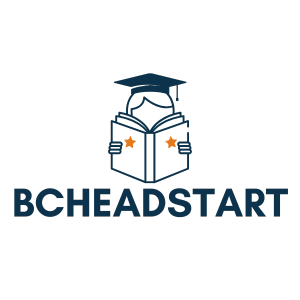Education policy analysis might sound like a dry topic reserved for the most dedicated of scholars, but it’s anything but boring. Imagine a world where every student has access to quality education, where policies aren’t just words on paper but real-life game changers. It’s like the superhero of the education sector, swooping in to save the day with data and insights that can transform classrooms and communities.
In a landscape filled with shifting standards and funding battles, understanding education policy is crucial. It’s the secret sauce that can turn a mediocre school into a thriving hub of learning. So, grab your favorite beverage and get ready to dive into the fascinating world of education policy analysis. It’s time to uncover how smart policies can make a difference and why they deserve a front-row seat in the education conversation.
Table of Contents
ToggleOverview of Education Policy Analysis
Education policy analysis entails the systematic examination of policies that govern the education sector. This process involves assessing the implications of various educational strategies and initiatives. Various stakeholders, including policymakers, educators, and researchers, utilize these analyses to inform decisions and enhance educational outcomes.
Analyzing education policy encompasses several components. Stakeholders often evaluate policy intent, implementation, and results. Understanding the context in which policies operate proves crucial for identifying strengths and weaknesses. Also, data collection and analysis play pivotal roles in measuring policy effectiveness. This involves the examination of metrics such as student performance, graduation rates, and funding allocations.
Effective education policy analysis impacts long-term educational reform. Scholars highlight that grounded analyses can foster evidence-based practices. Data-driven insights contribute to the development of targeted strategies that address specific challenges. Additionally, analysis can illuminate areas needing improvement, thus guiding resource allocation.
Collaboration among various entities enhances the quality of analysis. Partnerships between educational institutions, government agencies, and non-profit organizations often yield comprehensive insights. By sharing data and expertise, these entities can better navigate the complexities of educational policy.
Ultimately, education policy analysis serves as a crucial tool in transforming learning environments. As challenges in education persist, a thorough understanding of policies becomes essential. This ongoing evaluation establishes a foundation for effective interventions that improve student access to quality education.
Key Components of Education Policy

Education policy encompasses various components that significantly impact educational outcomes. These elements form the foundation of effective policy analysis, directing focus toward critical areas.
Funding and Resource Allocation
Funding plays a crucial role in shaping educational institutions. Effective allocation of resources ensures schools receive support necessary for facilities, staff, and learning materials. Policymakers analyze budget distributions to prioritize equitable access for all students. Strategies must address disparities, particularly in underfunded districts. Research shows that increased funding directly correlates with higher student achievement and graduation rates. Evaluating the efficiency of expenditure helps identify best practices for resource use.
Curriculum Development
Curriculum development drives educational standards and relevance in classroom instruction. Strong curricula align with state and national standards while addressing the needs of diverse learners. Stakeholders must collaborate to integrate updated knowledge and skills. Curricula should also incorporate technology and critical thinking to prepare students for future challenges. Data-driven assessments highlight areas requiring curriculum improvements, ensuring they remain effective. Continuous evaluation guarantees that educational programs meet evolving societal demands and student expectations.
Methodologies in Education Policy Analysis
Education policy analysis employs various methodologies to comprehensively assess educational strategies and their impacts. Understanding these methodologies enhances insights into effective policy formulation.
Quantitative Approaches
Quantitative approaches focus on numerical data to evaluate educational policies systematically. These methods include statistical analysis, surveys, and standardized testing metrics. For instance, the use of longitudinal studies enables researchers to track student performance over time. Data-driven insights help identify correlation patterns between funding levels and student outcomes. These approaches allow policymakers to make informed decisions based on empirical evidence. By measuring factors like graduation rates and test scores, stakeholders can pinpoint areas needing improvement and allocate resources more effectively.
Qualitative Approaches
Qualitative approaches emphasize understanding the context behind education policies through interviews, focus groups, and case studies. Gathering insights from educators, students, and community members enriches the analysis and reveals insights not captured in quantitative data. By exploring individual experiences, qualitative research sheds light on how policies are implemented and perceived at various levels. Thus, understanding perceptions of policy effectiveness is crucial for driving reforms. These methodologies help form a comprehensive view, ensuring that analysis considers diverse perspectives and local contexts.
Challenges in Education Policy Analysis
Education policy analysis faces several significant challenges that can hinder effectiveness. Understanding these obstacles facilitates more informed decision-making.
Data Availability and Reliability
Access to quality data remains a major challenge in education policy analysis. Many educational institutions struggle to collect reliable data, leading to gaps in understanding. Limited access affects the evaluation of policy effectiveness, with inadequate metrics influencing outcomes. Research shows that public data sources often lack comprehensiveness, which can misrepresent student performance. Utilizing data from various reliable sources ensures that analysts have a clearer picture. Collaboration among educators, researchers, and data scientists enhances the overall reliability of data used in analyses, enabling more accurate assessments of educational strategies.
Stakeholder Engagement
Engaging stakeholders proves vital yet challenging in education policy analysis. Diverse groups, including educators, administrators, and community members, often have differing priorities and perspectives. Effective communication fosters collaboration but can be difficult to achieve. Inclusive engagement ensures that policies reflect the needs and insights of various stakeholders. Public forums, surveys, and focus groups provide platforms for input, capturing valuable feedback. Building trust among all parties strengthens relationships and enhances commitment to the policy process, ultimately leading to more effective educational outcomes.
Education policy analysis serves as a crucial tool for shaping the future of the educational landscape. By systematically examining policies and their implications, stakeholders can make informed decisions that enhance educational outcomes. The collaboration among various entities strengthens the analysis process, ensuring that diverse perspectives are considered.
Addressing the challenges in data reliability and stakeholder engagement is vital for effective policy implementation. As education continues to evolve, a commitment to ongoing analysis and adaptation will be essential for meeting the needs of all learners. Ultimately, a robust understanding of education policies can drive meaningful change and improve access to quality education for every student.

